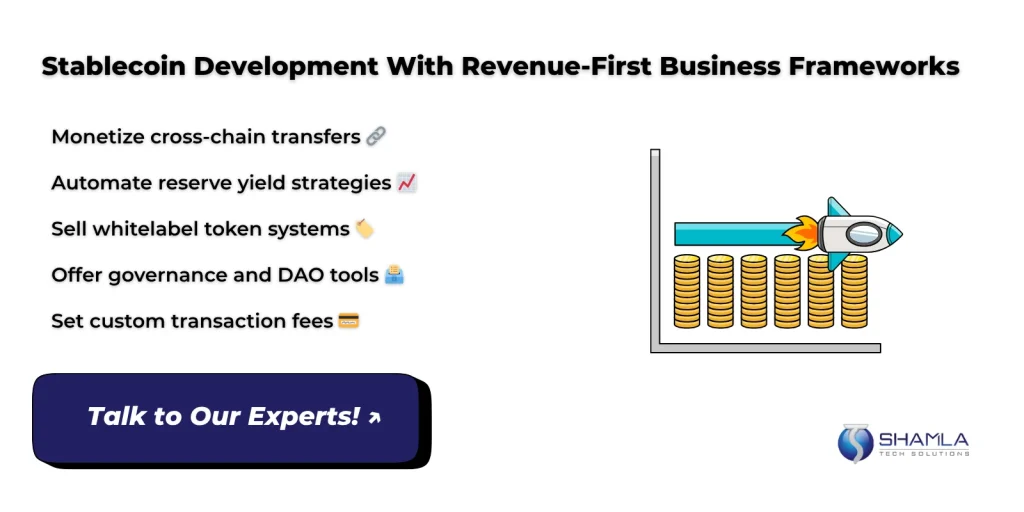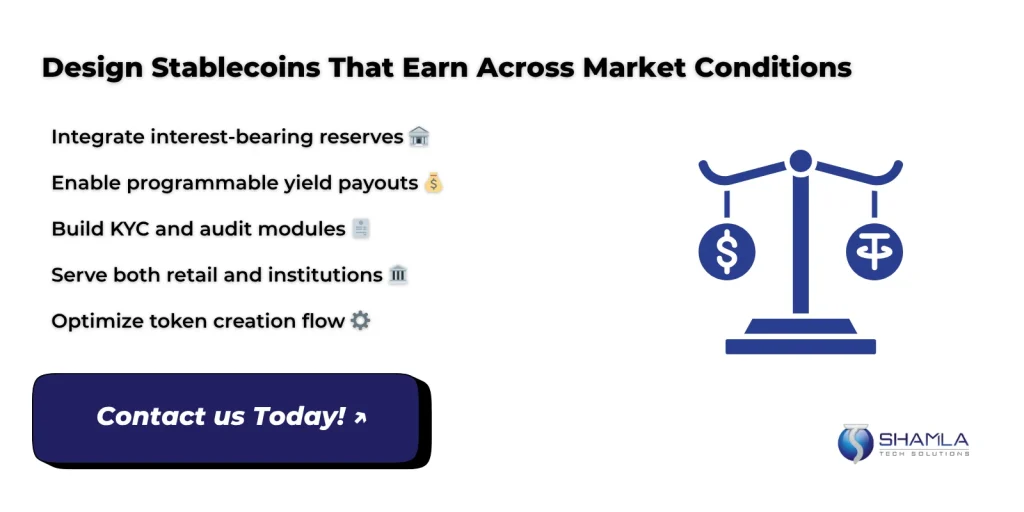The Core Revenue Channels of Stablecoin Issuers
1. Interest on Fiat Reserves
2. Government Paper Investments
3. Transaction Fees
4. Minting & Burning Fees
5. Strategic Reserve Investments
6. Custodial Partnerships
7. Treasury Management Partnerships
Stablecoin Token Creation & Circulation: The Engine of Revenue
Issuance Workflow
Redemption Workflow
Institutional & Retail Roles
Demand Cycle Effects
Tether & Circle Examples
Technical Infrastructure
Developer Requirements
Other Income Streams for Stablecoins Beyond Reserve Yields
1. B2B Partnerships & Licensing
2. API & SDK Monetization
3. On-Chain Analytics & KYC Services
4. White-Labeling & Tech Licensing
5. Decentralized Stablecoin DAO Services
6. Cross-Platform Integration Fees
7. Custom Development & Consulting
Regulation, Risks & the Future of the Business Model
Regulatory Pressure & Fee Impact
Audit Demand & Collateral Standards
Algorithmic & Decentralized Models
Algorithmic and decentralized tokens like DAI and FRAX earn via dynamic stability fees and collateral auctions. These models use smart rules to mint or burn tokens based on price or asset ratios. Governance tokens pay protocol fees to cover operations. This structure showcases how stablecoin issuers make money without holding large fiat reserves. Teams behind these systems offer decentralized stablecoin development support, building governance frameworks and smart contracts. Revenue flows come from system fees and token economics, not traditional reserve interest. This setup adds innovation to the classic stablecoin business model, with community governance and automated fee markets driving income.
Future Revenue Paths & CBDC Threats
Conclusion
Stablecoin issuers earn money by collecting interest on held cash, charging transaction and mint/burn fees, and offering services like licensing, APIs, and audits. They back tokens with reserves in bank deposits, government papers, and strategic investments to power the stablecoin revenue model. Maintaining proof of reserves and following rules builds trust and keeps platforms legal.
As markets change, innovation moves toward programmable yield, decentralized fee structures, and new integrations to stay competitive. Companies like Shamla Tech, a top stablecoin development company, design and launch token systems that balance income streams with compliance, guiding clients to secure profits and long-term stability.
Build your stablecoin with custom revenue models and full compliance support!
Contact us to launch your stablecoin with expert-led development and strategy!





